Lizards love the rainforest for warmth, humidity, and food abundance. Thousands of species live here, most yet undiscovered.
Terra-firma (solid ground), flooded areas, and trees themselves offer a good habitat for lizards to live and thrive in the rainforest.
Many species are found in South America and Central America and can live long lives here.
It’s not atypical for the lizards of the rainforest to live at least 10 years.
The following species are often found in some of the most remote parts of the rainforest while a few of them can live in disturbed areas as well.
Table of Contents
1. Amazon Pygmy Gecko
A species of The Amazon Basin, The Amazon Pygmy Gecko (Pseudogonatodes guianensis) is one of the smaller geckos of the rainforest.
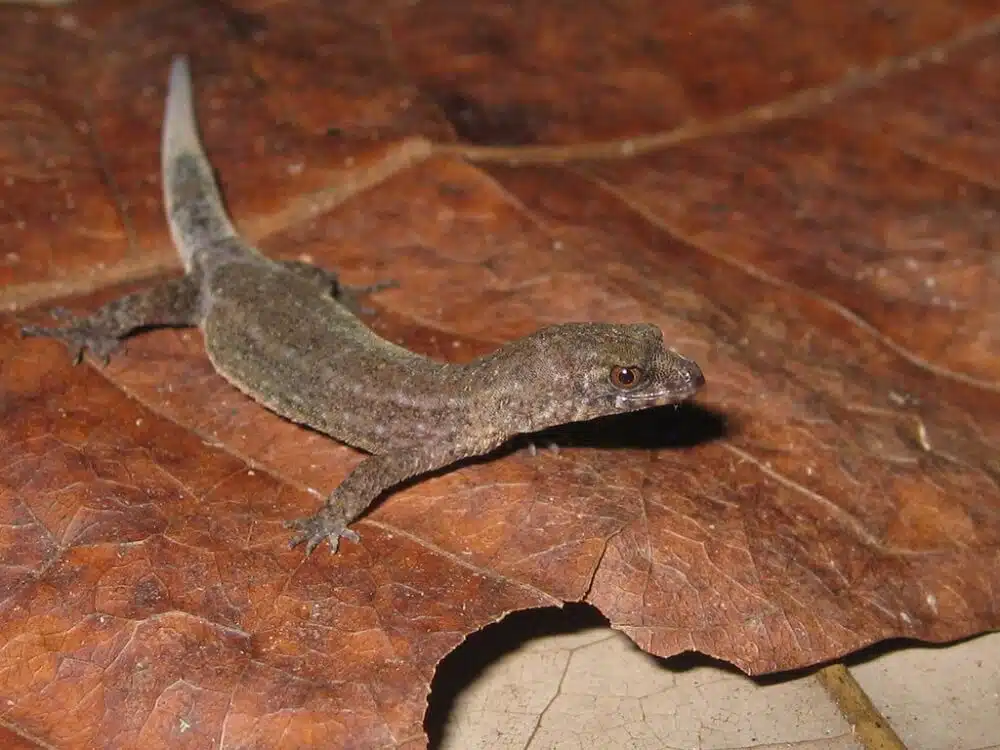
This small lizard can even measure less than 1 inch. It generally has a dark appearance as it’s dominated by gray nuanced at first that darkens almost becoming fully black.
Stripes are also common along its lower sides which tend to have a white color at first. These stripes further darken to a yellow nuance as the species matures.
Short white bands appear on this lizard as it becomes an adult.
Much of its coloring is also impacted by its habitat in the rainforest.
2. Amazon Bark Anole
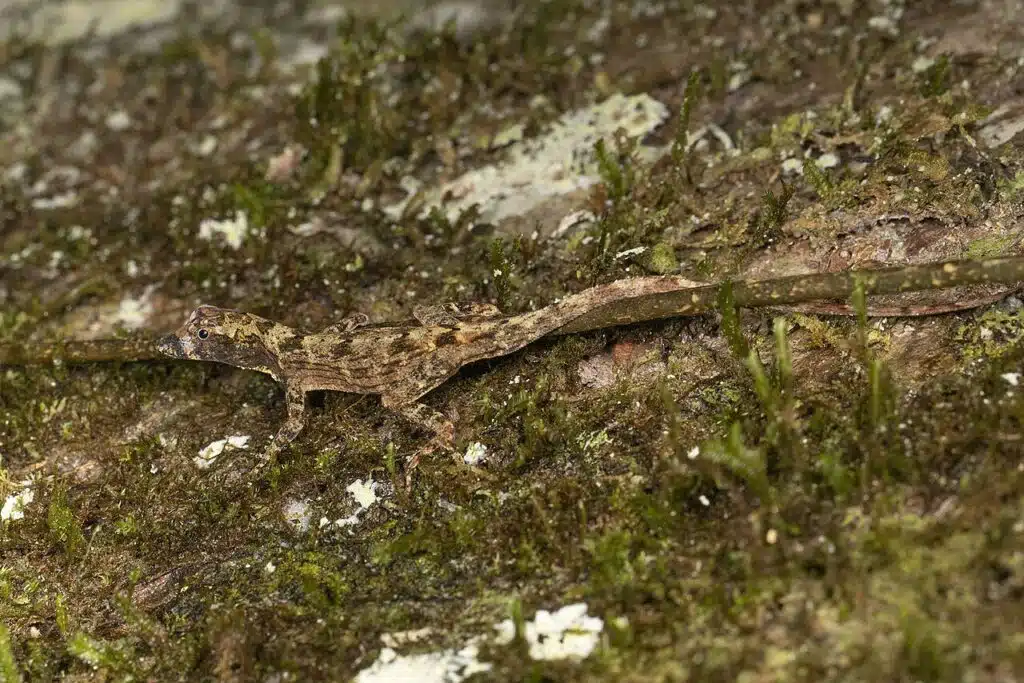
The Amazon Basin in Brazil, Ecuador, Colombia, and Venezuela is home to The Amazon Bark Anole (Anolis ortonii).
A species that comes in different colors, the anole grows to 5 inches.
As a species of The Amazonian rainforest, the lizard can be recognized by its dewlap, highly colorful in this case.
The rest of its body isn’t colorful at all. This is a species known to take on the coloring of its habitat, particularly of bark and rocks.
Bright gray, dark gray, or black and gray with a patterned dorsum, this species is highly common and sometimes spotted based on its diurnal habits.
3. Amazon Green Anole
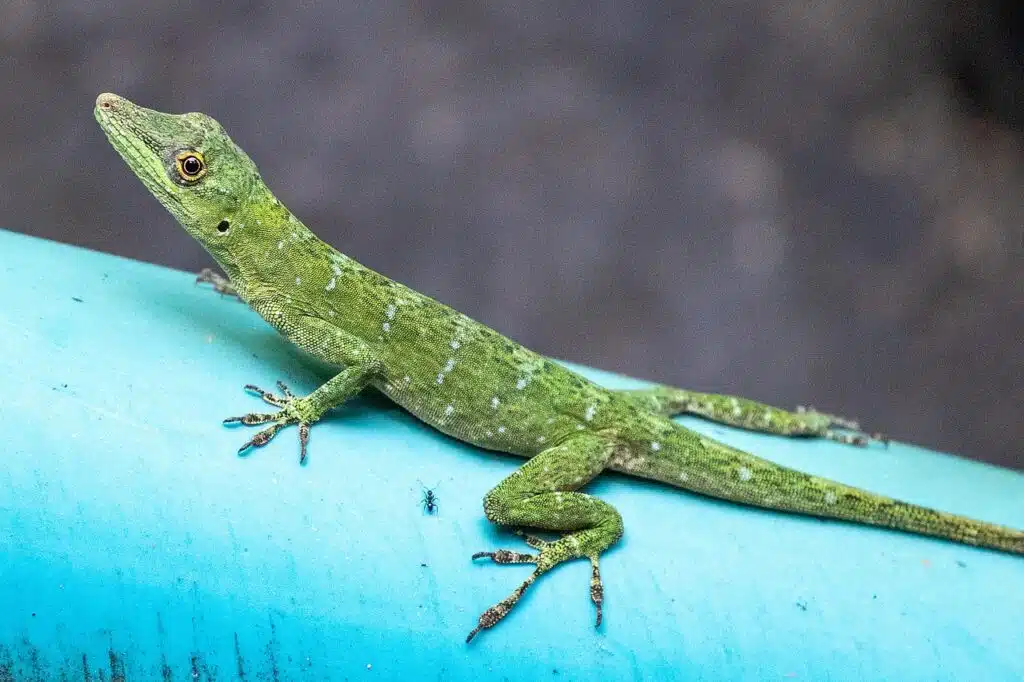
A very common species in The Amazon Rainforest, this anole (Anolis punctatus) is found across multiple countries.
Suriname, Venezuela, Ecuador, and Peru are among the states where the rainforest houses it.
Mostly green, The Amazon Green Anole can be bright green or dark green.
It has a bright, almost white, underside and small yellow spots which match the yellow nuance of its tail.
Orange-brown nuances are specific to its dewlap. Amazon Green Anoles are small, reaching a size of up to 4 inches on average with some of the largest lizards of the species holding a record-breaking length of 9 inches.
4. Western Amazon Mabuya
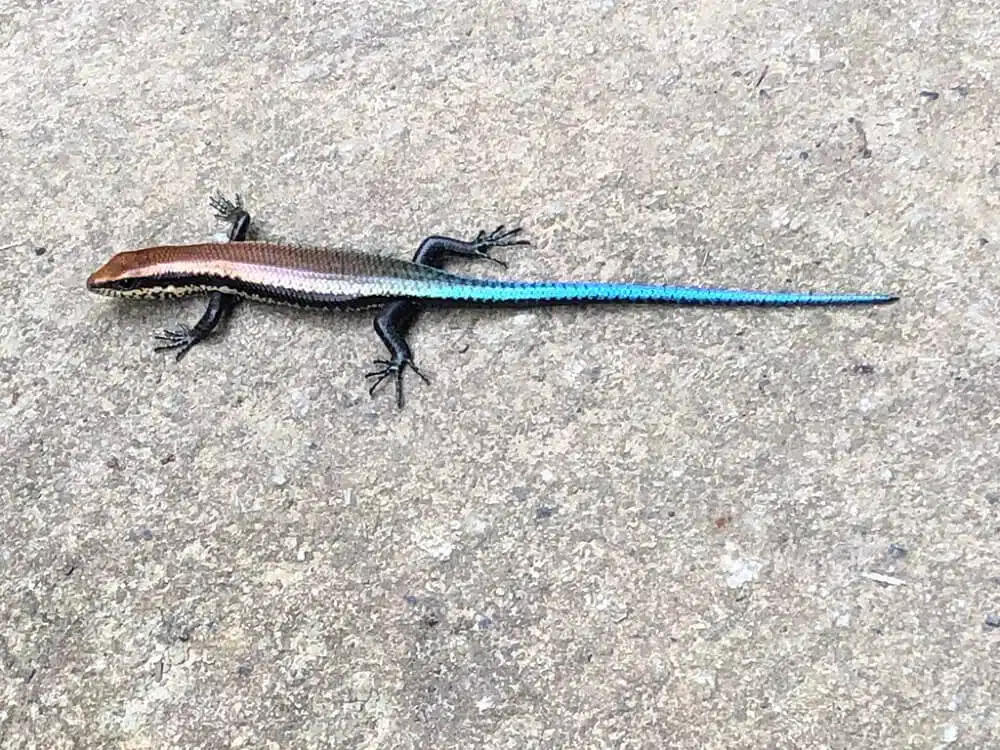
A species of the upper Amazon, The Western Amazon Mabuya (Varzea altamazonica) is one of the larger types of lizards in the rainforest.
A dark-striped appearance best describes this species.
Brown or black with stripes, Western Amazon Mabuyas can even show a golden-brown dorsal nuance with black stripes and white underbellies.
Western Amazon Mabuyas also come in a few other morphs. A brown morph with yellow stripes is seen within the species.
Living on the ground, this is a species of Brazil, Ecuador, and Bolivia.
5. Amazonian Shade Lizard
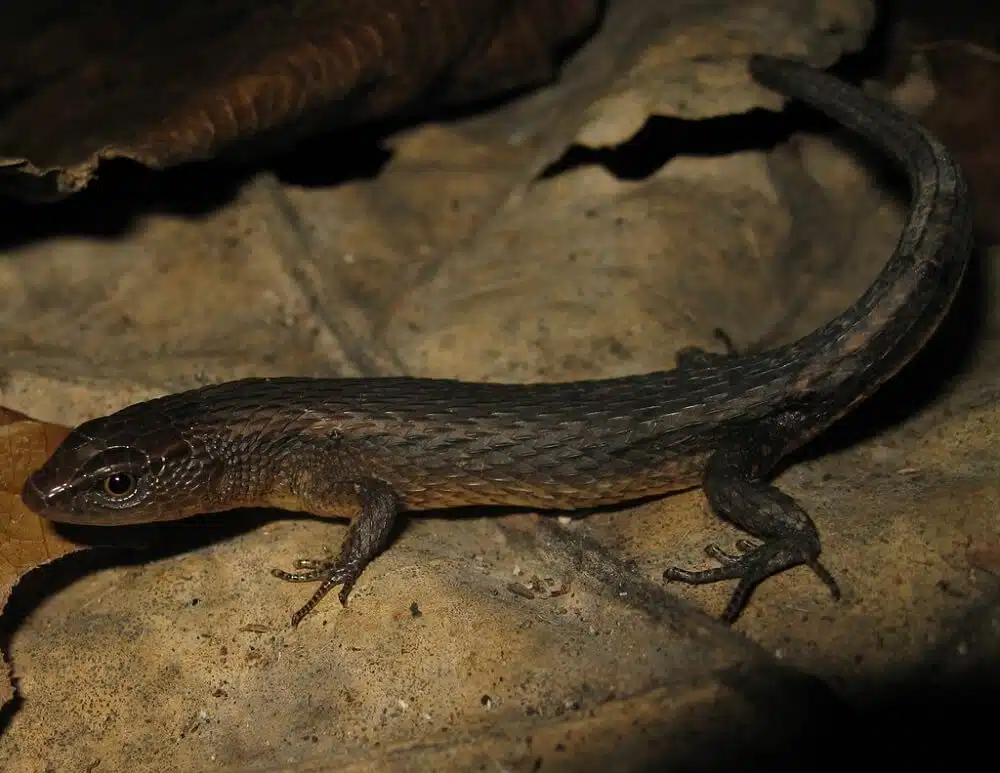
Reaching a size of up to 6.6 inches, Amazonian Shade Lizards (Alopoglossus amazonius) are among the species that stand out in the rainforest.
A type of lizard with dorsal striations, The Amazonian Shade Lizard is further known for its orange-red nuances with black spots between its striations.
There’s also a darker morph dominated by brown and black patterns, also exhibiting distinct striations.
Amazonian Shade Lizards live in protected areas of the rainforests, mostly in Brazil and partly in Ecuador.
They live among ground-level leaves and only come out for food as they prefer higher moisture.
6. Amazon Lava Lizard
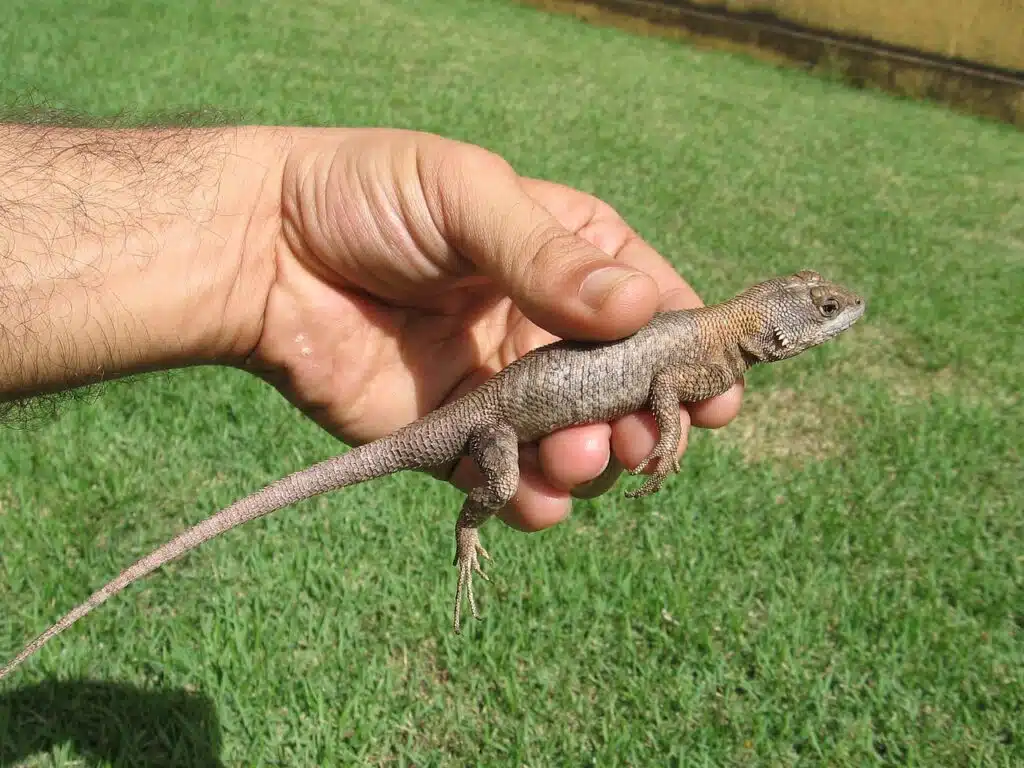
A species found in South America, The Amazon Lava Lizard (Tropidurus torquatus) plays an important role in the ecosystem of The Amazon Rainforest.
This species feeds on termites. It can eat hundreds of termites in one occasion but it also eats other insects.
Small fruit and plant material is also consumed by the lizard but to a lesser extent.
Like many lizards of The Amazon Rainforest, The Amazon Lava Lizard is a species that takes on the color of tree bark. Dominated by gray patterns, it may be impossible to spot when perched.
7. Collared Treerunner
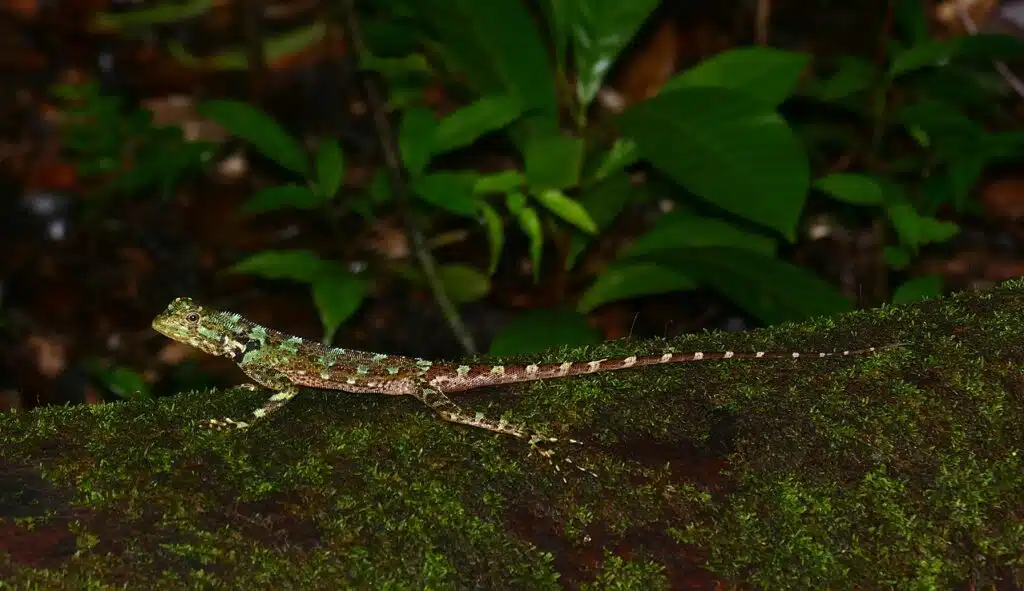
As an arboreal species, The Collared Treerunner (Plica plica) spends its life on trees.
Mostly adhered to vertical surfaces such as the tree trunk itself, this is a type of lizard that has a dark appearance.
Mostly green, it does not take on the appearance of tree bark. Olive and dark green nuances are specific to the lizard.
Black patterns with tiny bright spots are further visible on the species with a spiky collar.
Its dark color is also coupled with the preference for deep forest living where there’s no direct sunlight.
A typical Collared Treerunner can grow to a length of almost 6 inches.
8. Blue-Lipped Tree Lizard
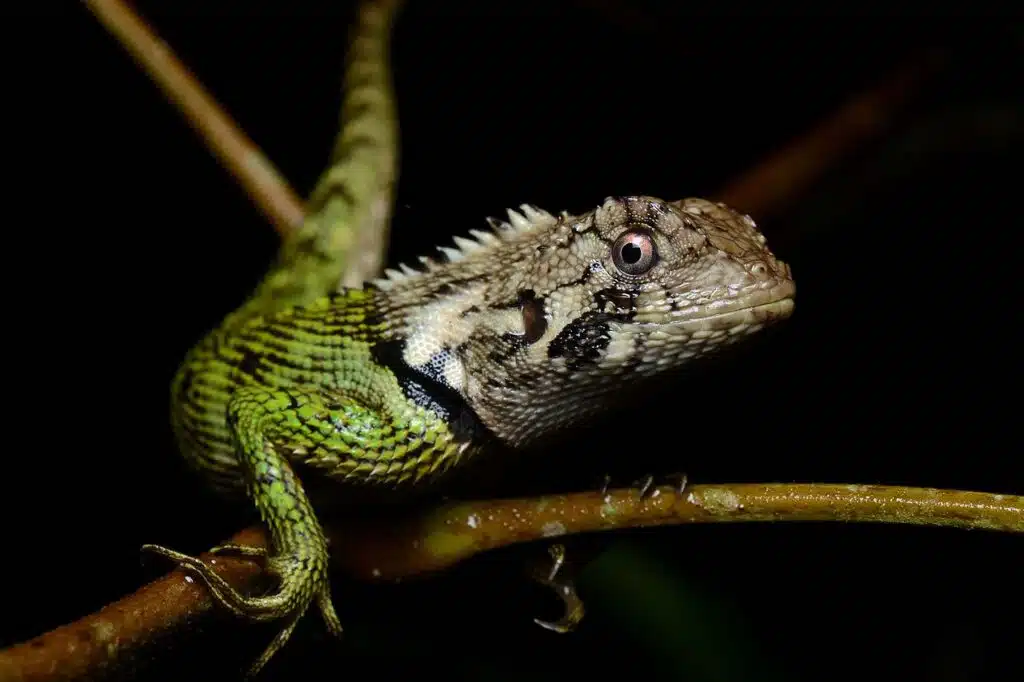
A species of The Amazon, Blue-lipped Tree Lizards (Plica umbra) are mostly found in Ecuador.
This is a long lizard and one of the longest species of The Amazon Basin, reaching a length of up to 12 inches.
This length is mostly represented by its long thin tail.
The lizard itself comes in yellow, black, and brown nuances with different patterns and green scales on its legs.
This is a species that lives on low branches and that rests on them as well.
It does come down from the tree for food but it tends to do this when it rains.
Grasshoppers and other bugs are among their top reasons to come down from trees for food.
9. Forest Whiptail
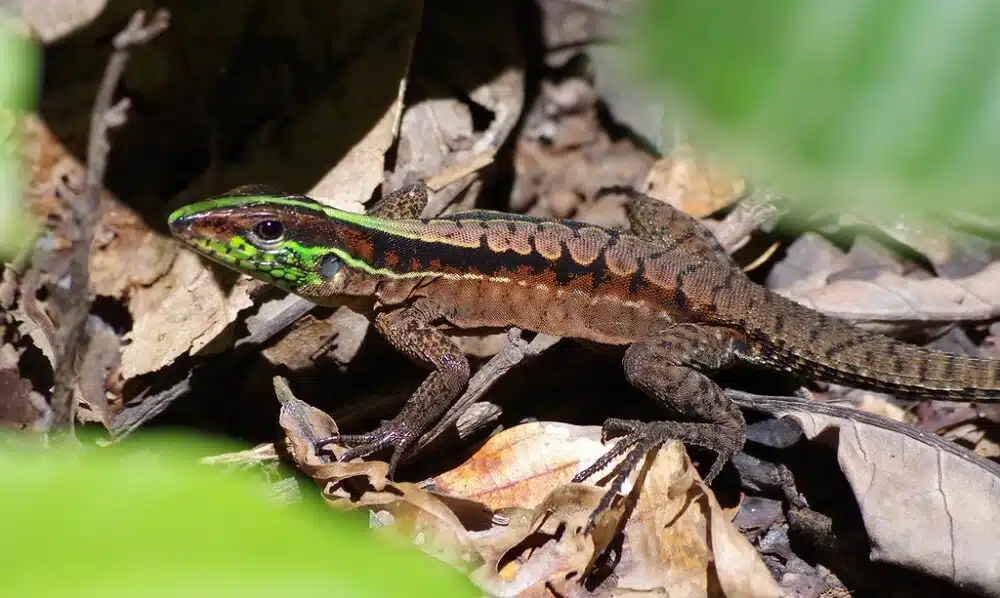
A species of the upper Amazon, Forest Whiptails (Kentropyx pelviceps) are present here in numerous subspecies.
Like other lizards of the species, green stripes define its appearance.
The mouth is green with green stripes continuing down the back of its head and quickly turning yellow.
The lizard itself is dark, with black and dark red nuances specific to its dorsum.
Metallic red colors are seen on the sides, on its legs, and on the upper tail.
Forest whiptails are types of lizards with very long tails, always longer than the body and always less colorful than the body and the head.
10. Bridled Forest Gecko
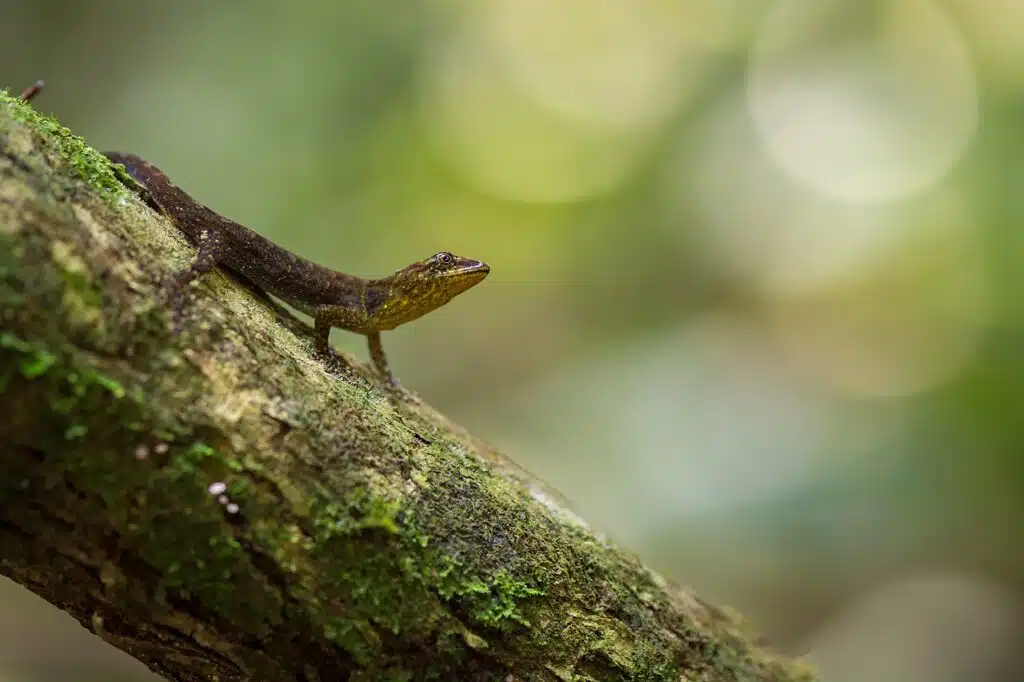
A species of The Amazon Rainforest, Bridled Forest Geckos (Gonatodes humeralis) are among the most colorful arboreal lizards of the rainforest.
Various patterns are specific to this lizard, mostly with yellow sections on the head and with yellow patterns on the back.
Yellow neckbands are a common sight across most of its patterns.
Its tail is always darker, mostly brown or orange with brown bands. Some lizards of the species also show blue dots on the back and blue sections on the head.
These types of lizards live on trees, but they only climb a few inches making a living at the base of the tree.
11. Slender Amazon Anole
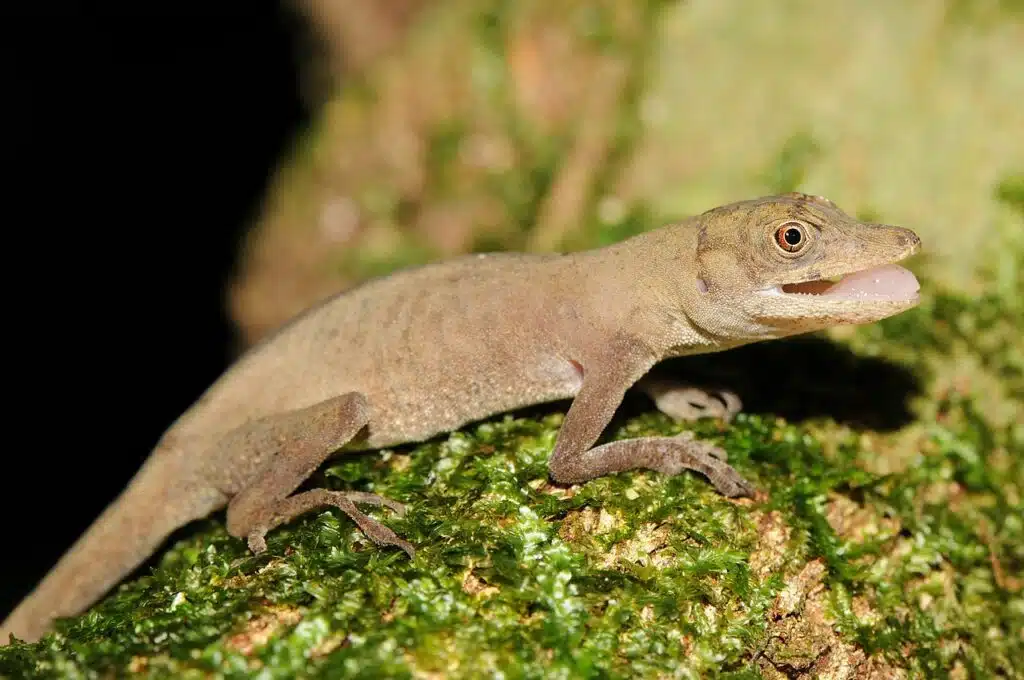
A type of arboreal species of Brazil’s rainforest, Slender Amazon Anoles (Anolis fuscoauratus) are colorful.
They show yellow-golden ground nuances with small black dots and a yellow-brown head.
Its legs have brighter yellow nuances without black patterns.
Slender Amazon Anoles also live outside Brazil at high altitudes of up to several thousand feet.
Most of their days are spent hiding while they come out for food at night. Bugs and spiders represent the bulk of their dietary choices.
12. Giant Ameiva
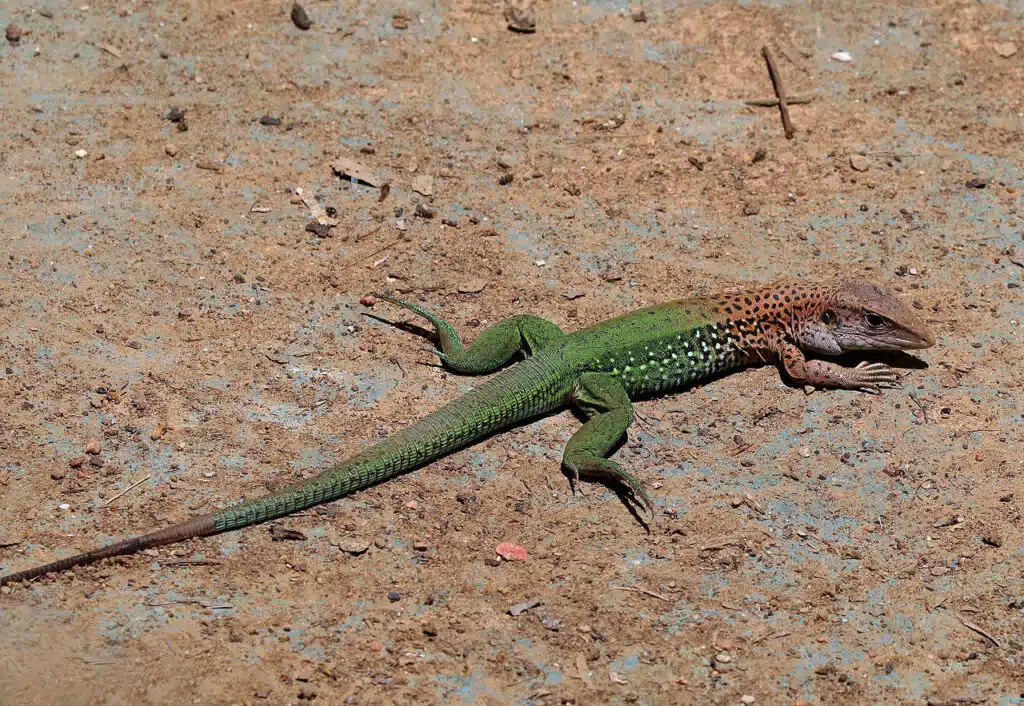
Giant Ameivas (Ameiva ameiva) are some of the largest lizards of The Amazon Rainforest.
They have bright green coloring dominating one part of their body, depending on their age.
Adults have a green lower body and tail while juveniles have a green head and upper body.
Reaching a size of up to 20 inches, these lizards have long tails and brown heads with black spots.
The green sections on the species have a metallic nuance with additional yellow spots with black borders on the sides.
Vibrancy is specific to its green color which, together with the large size of the species, makes it a sought-after pet lizard.
13. Common Forest Anole
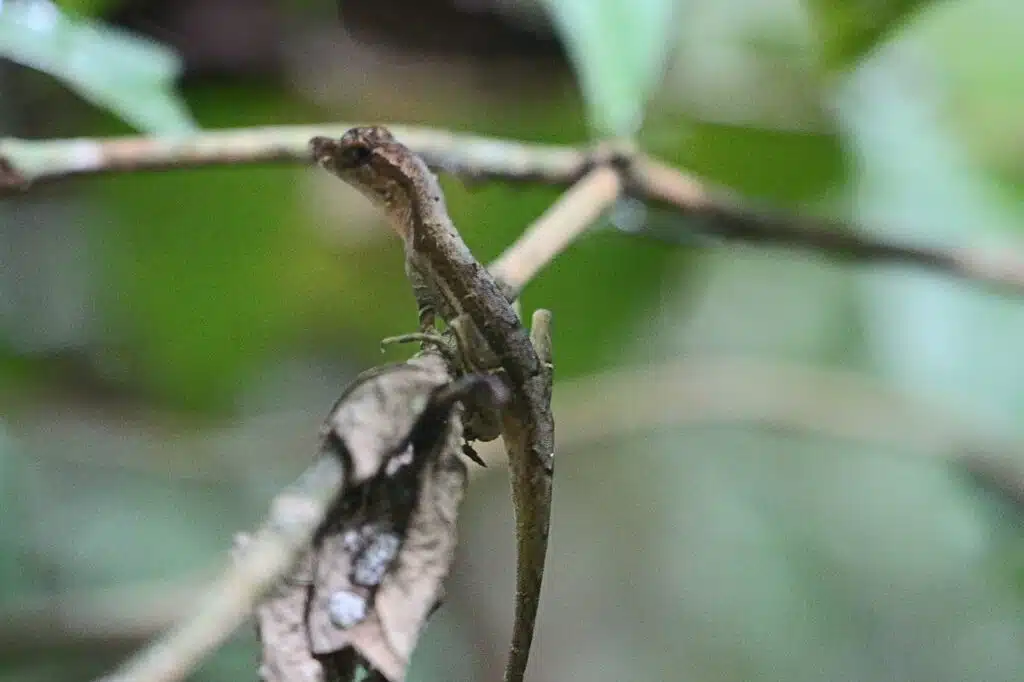
Often feeding on worms, Common Forest Anoles (Anolis trachyderma) are found among leaf litter, under dead trees, and under rocks.
They feature a vivid orange dewlap, which also makes them a prized species in captivity.
Common Forest Anoles inflate their dewlaps when threatened or when they feed uneasy.
Otherwise, the dewlap remains invisible.
Gray-brown colors are specific to this species with black patterns. Black stripes along the body as well as black dorsal patterns make this species look similar to twigs.
Its reduced size also means the lizard might be taken as a twig by its predators when up on trees.
14. Striped Forest Whiptail
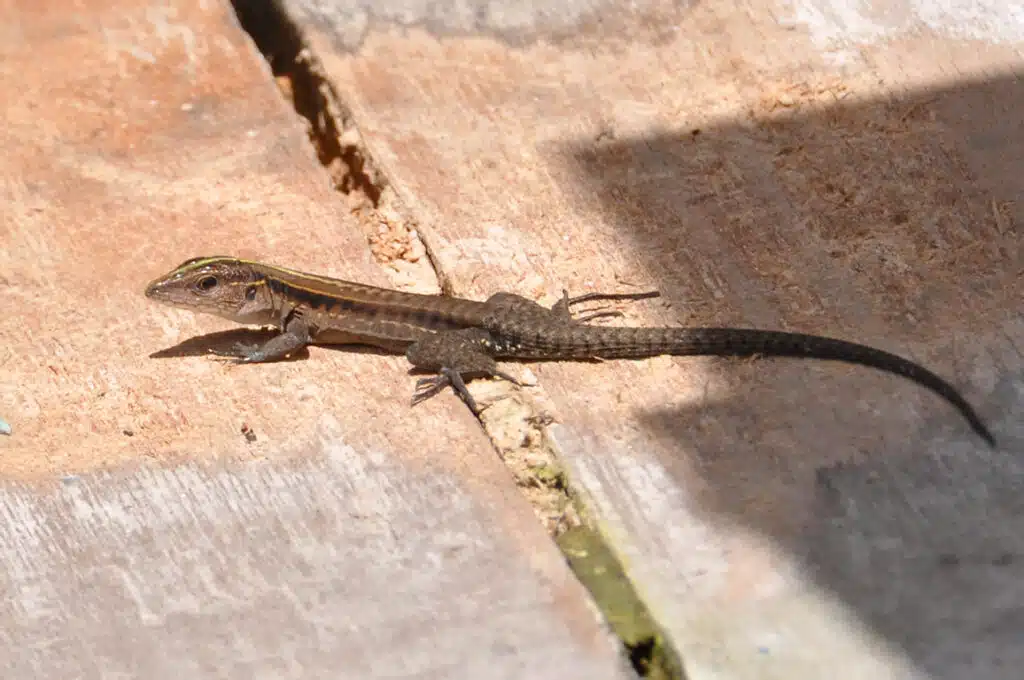
Native to South American rainforests, the Forest Whiptail (Kentropyx calcarata) is a striped type of lizard.
It has a dark appearance combining brown and black stripes across its body. Bright green stripes make this species stand out.
It also features a bright green mouth and underside coloring.
Additional nuances include red colors bordering its black stripes.
This species has atypical breeding patterns. It turns out Forest Whiptails breed in the same nest, a habit that can offer them protection.
15. Diving Lizard
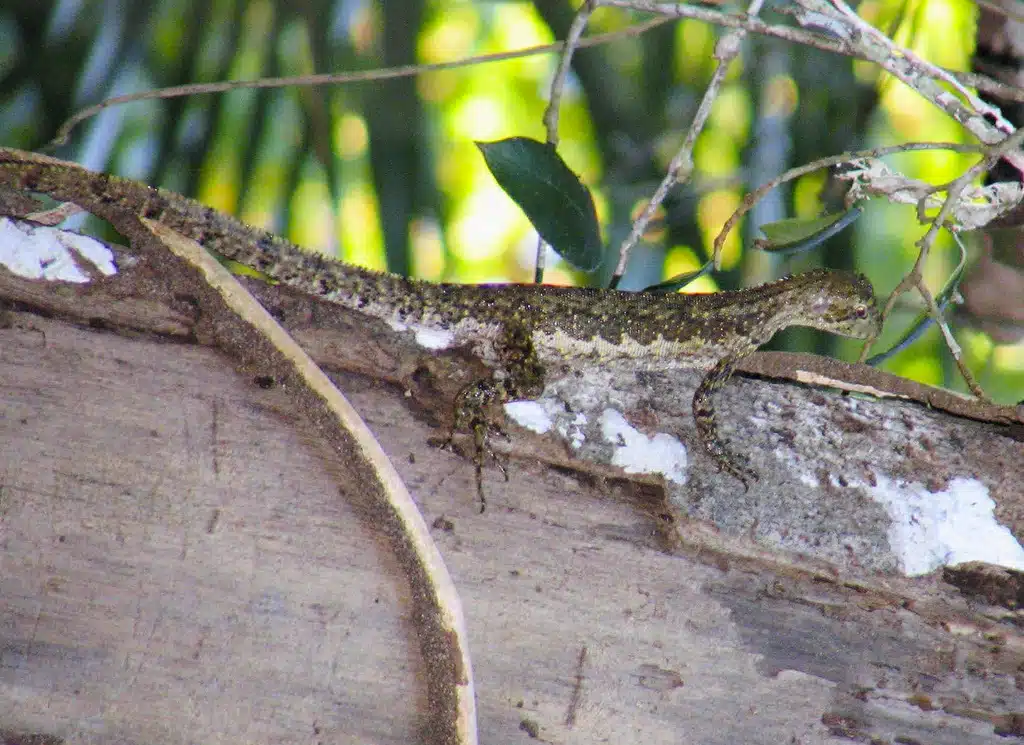
A climbing species, The Diving Lizard (Uranoscodon superciliosus) is not to be confused with the true diving lizard, The Anolis Aquaticus.
This is an arboreal species with a rainforest presence in multiple countries, unlike the Costa Rican presence of Anolis Aquaticus.
While Ground Lizards, Diving Lizards prefer riparian areas or areas of thick vegetation close to water.
Here they can gather different types of bugs and insects, such as cockroaches.
Small frogs and their tadpoles are also consumed by this species.
Green and black colors are specific to this species which shows off-white underside coloring and tiny white dots across the dorsum.
16. Broad-Headed Woodlizard
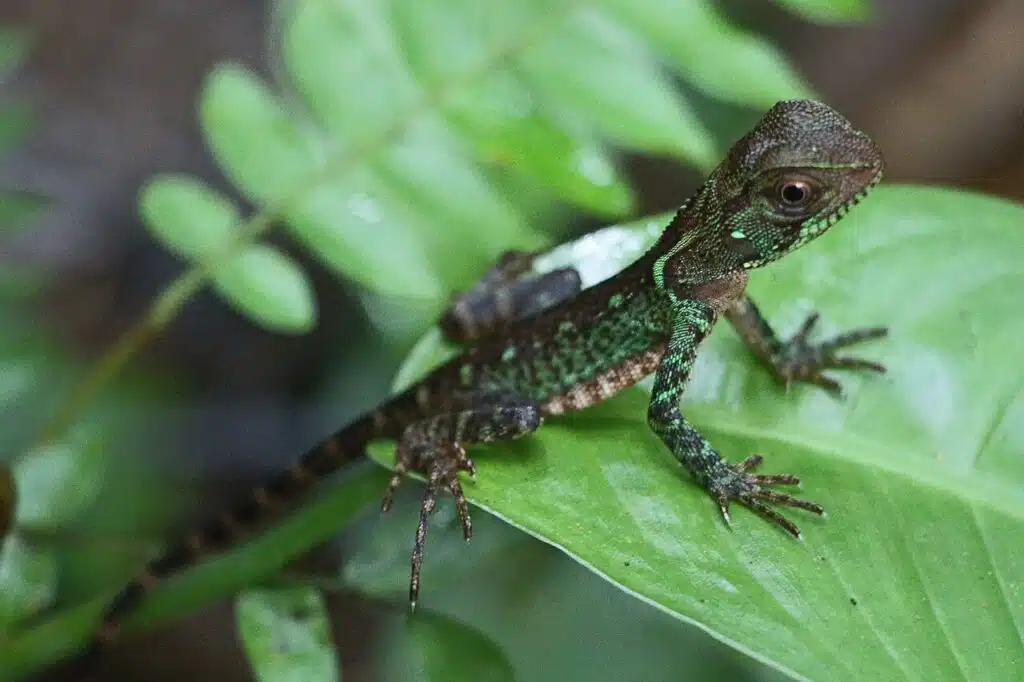
One of the largest and most variable lizards of the rainforest are Broad-Headed Woodlizards (Enyalioides laticeps).
This is a species dominated by green nuances, gray nuances, or brown shades, depending on its habitat.
There’s even a black morph with bright green stripes and patterns that shows a red head.
A large lizard that may reach half a foot in length, the species is semi-arboreal and diurnal.
It lives on branches but also in tree holes.
Some of its favorite foods include caterpillars, bugs, and bug larvae that are active during the day.
17. Western Leaf Lizard
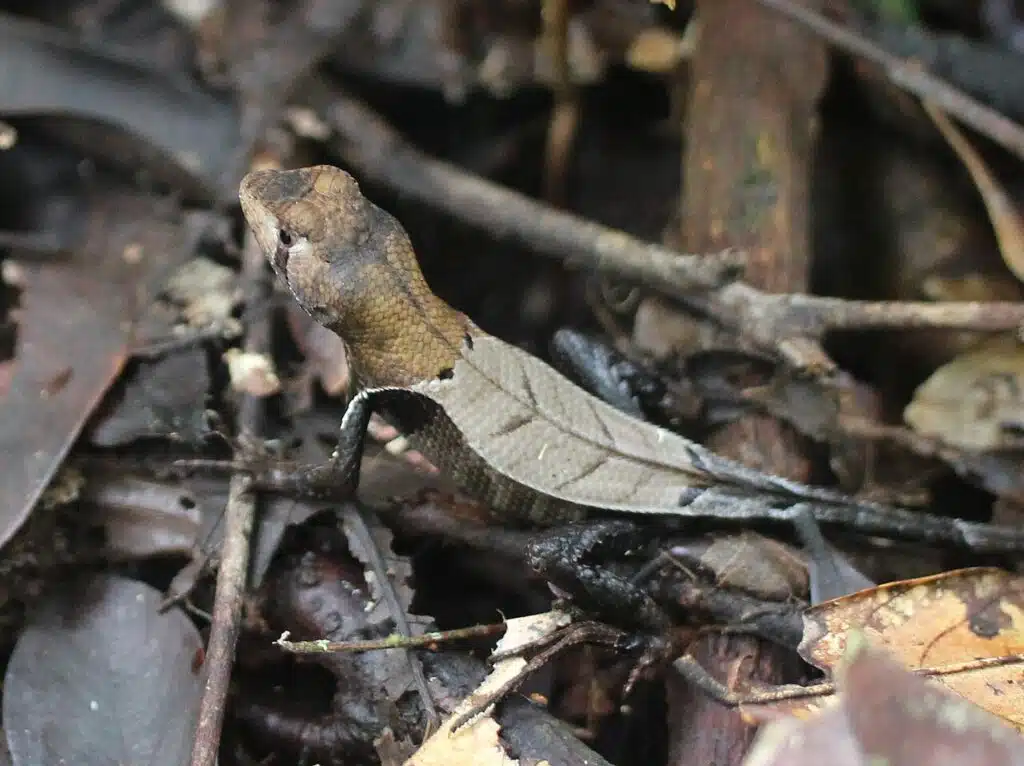
Color mimicry of the habitat is not rare in rainforest lizards.
Western Leaf Lizards (Stenocercus fimbriatus) take their mimicry efforts a step further. These types of lizards take on the appearance of a leaf.
This can be a green or a brown leaf with black stripes that mimic the veins of a leaf when seen from above.
The back of the species mimics a leaf while its head is brown, black, or gray.
Black legs are specific to the species so that the legs aren’t visible when the lizards move on dead leaves on the ground.
A species of The Amazon, Western Leaf Lizards are both diurnal and nocturnal.
18. Tropical Thornytail Iguana
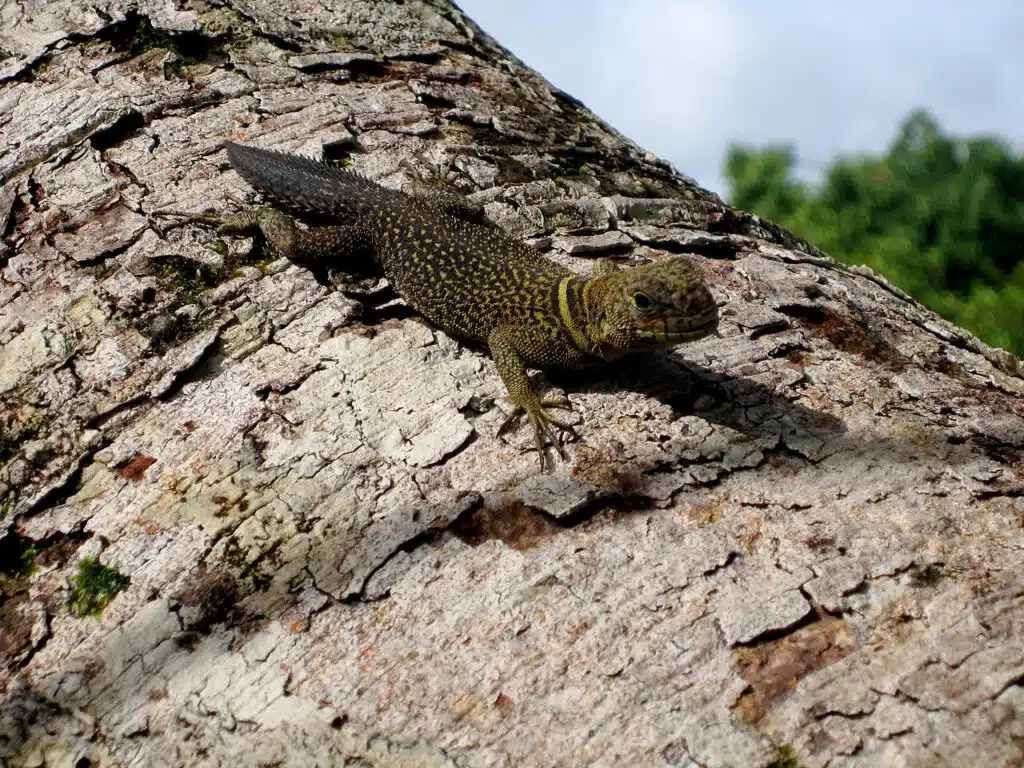
Found in the Eastern Amazon Rainforest, Tropical Thornytail Iguanas (Uracentron flaviceps) come in different colors.
Brown morphs with black spots exist as do black morphs with red-brown heads.
This is a type of arboreal species showing specific dietary preferences. They only eat certain types of insects when small and only eat certain types of bugs when large.
Males of the species are further known to breed with multiple females and are also slightly larger.
They reach a length of over 5 inches while females grow to 3 inches.
19. Common Monkey Lizard
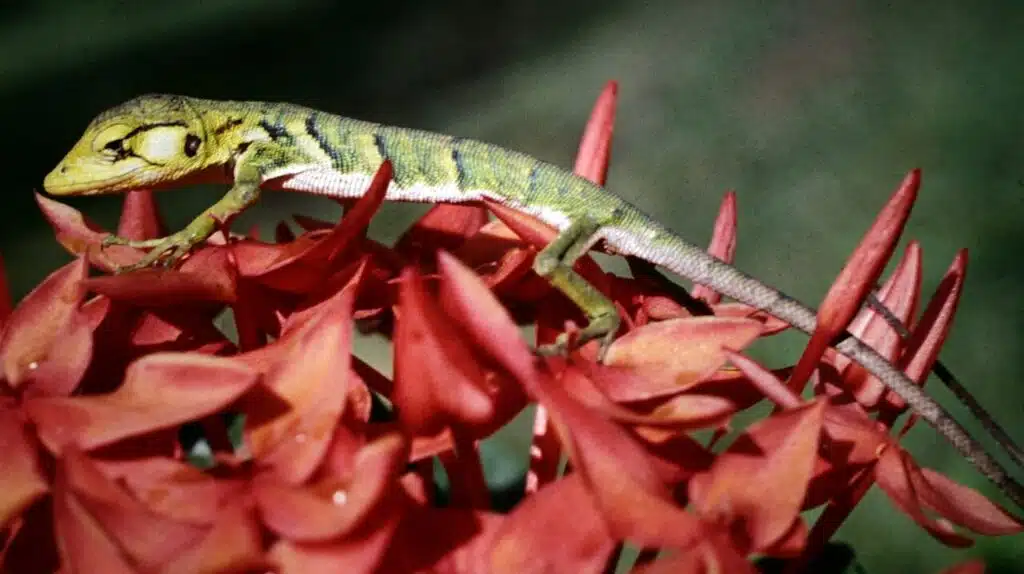
A large type of rainforest lizard, The Common Monkey Lizard (Polychrus marmoratus) may reach a length of up to 19 inches.
This is multi-colored species that often relies on its camouflaging colors as it moves rather slowly.
Green, yellow, and brown colors are specific to the lizard which may also show yellow bands or yellow spots.
Common Monkey Lizards live in different types of rainforest areas such as clearings.
They are commonly found in flooded areas as an arboreal species as well as on solid ground.
Regardless of its habitat, the female Common Monkey Lizard always lays eggs on trees, soon after mating.
Females lay at least 4 eggs at once and also live in disturbed habitats, making Common Monkey Lizards a resilient species of the rainforest.
20. Gold Tegu
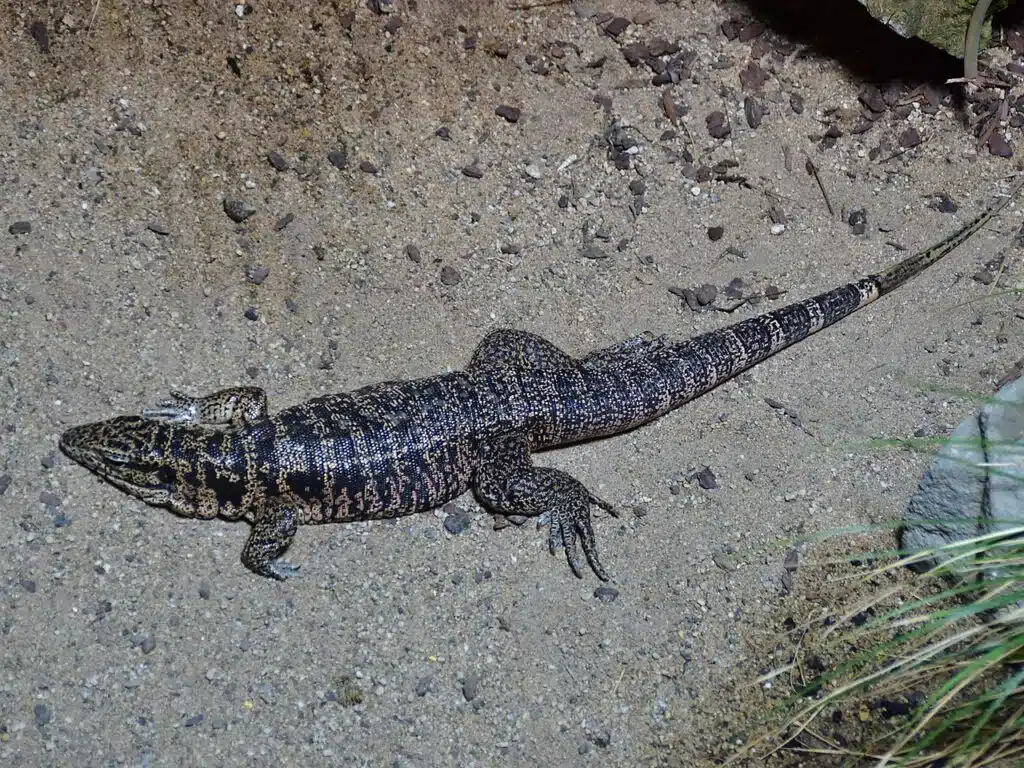
Gold Tegus (Tupinambis teguixin) is a common lizard of Central and South American rainforests.
This is a large type of lizard, reaching a maximum length of around 3 feet. Its appearance is dominated by black stripes along its head, back, and tail.
The large size of Golde Tegus also means these lizards have a different diet which includes small snakes, other lizards, snails, and frogs.
These lizards can also eat fruit and they’re often fed grapes in captivity.
While they aren’t the first choice as a pet lizard (highly aggressive), Gold Tegus are still popular given their size.
These types of lizards require a large enclosure in captivity. They burrow and need a thick substrate.
With the right care, Golde Tegus can live up to 20 years.